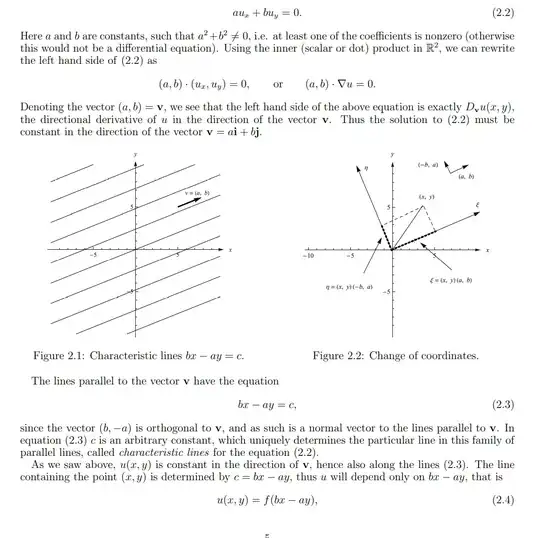I know how to solve an equation like this and even a bit more complex but only because I've done several exercises like these a while back. In a problem like this I typically just do $dy/dx= b/a$ and get the constant of integration by itself and write $u(x,y)=f(C)$ But I'm realizing that I'm not really understanding what is going on in the geometric (directional derivative solution) sense. I've looked at youtube but nothing satisfactory. I feel like it's a stupidly simple fix or push in the right direction I need. I'm missing something.
Anyways here is a picture:
Why do we have $f(bx-ay)$? I understand 2.3 but not 2.4. I don't understand the "line containing the point (x,y)..."
if $(x,y)=(a,b)$ (or any multiple of this vector) we get f(0) but what does that mean? at $(-b,a)$ which is perpendicular to $(a,b)$ we get $f(-b^2-a^2)$.
Suppose $a=2$ and $b=3$ then $u(x,y)=f(3x-2y)$ . like what is f? I know it's an arbitrary function which needs to be specified initially but it's still a bit confusing. at (1,0) we get u(1,0)=f(3). at another point it changes. how can it be constant? Please provide clarity

